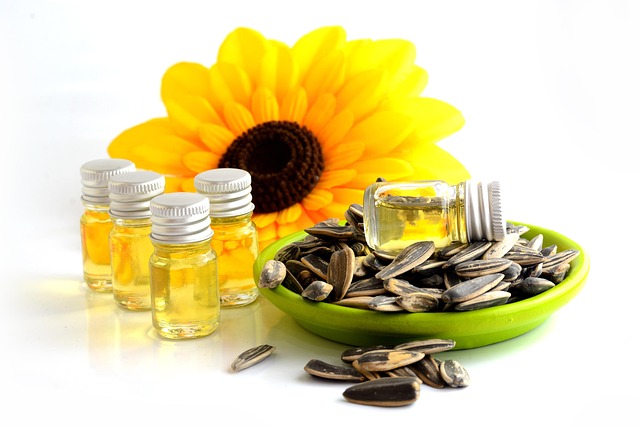Seed Oils, Toxic Or Not?
- While many “official health sources” claim seed oils are not harmful, individuals who have improved their health often credit eliminating seed oils as a major factor. These oils are widely present in processed foods, making their consumption almost unavoidable unless intentionally reduced.
- Seed oils like soybean, canola, and sunflower oil dominate the global market due to their low cost and versatility in cooking. They are heavily used in processed foods and restaurants, often marketed under misleading names like “vegetable oil,” making them an easy choice for consumers
- The most problematic seed oils—sunflower, safflower, canola, soybean, corn, grapeseed, rice bran, and cottonseed oil—are linked to various health risks. While some experts attribute their negative effects to high Omega-6 content, the dangers of chemical extraction, oxidation, and processing byproducts are often downplayed.
- Hexane, a solvent used in seed oil extraction, is considered toxic, yet its presence in the final product is not regulated. Additionally, seed oils undergo high-heat processing, leading to oxidation and the formation of harmful compounds. Their frequent use in frying further exacerbates their negative health impact.
- The article advises replacing seed oils with healthier fats like extra virgin olive oil, avocado oil, coconut oil, ghee, butter, beef tallow, and lard. Consumers should be cautious when purchasing olive and avocado oils, ensuring they are pure and not blended with seed oils. Cooking at home and reducing restaurant food intake are key steps in avoiding these harmful oils.
If you go search “seed oils” or “are seed oils toxic” you will get tons of links to studies and articles from “official health sources” that all seem to agree that seed oils aren’t that that bad for our health. Yet when you go and talk to people that have improved their health and changed their lives, one of the number one thing they will tell you about is cutting out seed oils. One big aspect of what they will likely mention is cutting out processed foods, as most processed foods on store shelves will contain some variety of seed oil. This certainly is the case, and we should all limit processed food intake, but the use of these seed oils is much more pervasive than just just processed foods.
Seed oils are by far the most commonly used cooking oils in the world today, with soybean, canola, and sunflower oils topping that list. Some places still will use mostly olive oil like Italy and other parts of Europe, but seed oils have become much more prevalent in the last 50-70 years around the world. These oils are used for almost anything today like frying, baking, and dressings. These oils are also by far the cheapest oils to purchase, often one-fourth the price of a quality olive or avacado oil. Combine that with names like “vegetable oil” which people will assume is healthy, and you have an easy sell at the store.
These oils are used in almost every single restaurant in the United States, the only ones that don’t likely use beef tallow, but the problem is that beef tallow will have other chemicals like BHT that make it still quite unhealthy. Once you start paying attention to these oils, you will realize they are EVERYWHERE. It does take some work and effort to start cutting out these oils and the foods that contain them, but it is absolutely worth the effort. So, what are the main oils you have to watch out for?
The “Hateful Eight” Oils
The “hateful eight” are the most common seed oils on the market today, and the oils used by nearly every restaurant out there. These oils include:
- Sunflower Oil
- Safflower Oil
- Canola (rapeseed) Oil
- Soybean Oil
- Corn Oil
- Grapeseed Oil
- Rice Bran Oil
- Cottonseed Oil
These are called the “hateful eight” because they are the most commonly used seed oils in most stores and restaurants today, and the least healthy of the common cooking oils. A simple google search on the hateful eight will likely yield mentions of these oils being high in Omega-6, and how that is what makes them unhealthy. While we do get too much Omega-6 today from various sources and its a big part of it, mainstream sources typically ignore or down play the other aspects of seed oils that make them unhealthy.
What Is Hexane And How Is It Used In Seed Oil Extraction
This paragraph is taken directly from a major hospital’s article on seed oils:
“The seed oils are extracted from plants either by a chemical or mechanical process. Seed oil critics claim the chemical extraction process leaves toxic byproducts, such as hexane, in the oils. While hexane is considered hazardous in gas form, it’s used as a liquid solvent to extract the oil from the seeds. The hexane is then evaporated off. Since the FDA does not currently monitor or regulate hexane residue in cooking oils, it’s unclear what trace amounts of hexane, if any, remain in the seed oils found on the supermarket shelves.” https://www.massgeneral.org/news/article/seed-oils-facts-myths?utm_source
See the problem here? They confirm that hexane is toxic in gaseous form, but since its just the liquid form used then it is totally fine. They say this while also admitting they have no idea how much hexane is actually left over in the oil when it gets bottled. When you look more into Hexane, it is certainly a toxic chemical, the fact that the levels aren’t monitored before being put on store shelves is a big problem. We have no actual idea how much hexane is in these oils, or any real studies on the health effects of consuming any level of liquid hexane. Here is a short PDF from the EPA on hexane for more other information https://www.epa.gov/sites/default/files/2016-09/documents/hexane.pdf. And also 2 studies on the health effects of gaseous hexane
https://www.ncbi.nlm.nih.gov/books/NBK601184/
https://www.ncbi.nlm.nih.gov/books/NBK201488/
What else besides hexane makes seed oils unhealthy?
When seed oils are processed, they are heated between 300-500 degrees, sometimes multiple times. This leads to the oil oxidizing, breaking down lipids in the oil and forming harmful compounds. When these oils are heated to that degree, they will then need to be deodorized because they become rancid after cooling. Deodorization involves heating the oil again in a steam stripping process. This is where hexane is supposed to be evaporated, and the other volatile compounds and free radicals are evaporated as well. Those compounds are removed, and the oil is cooled and filtered removing any impurities. So while you are still consuming rancid oil, at least it tastes and smells ok! We also have to trust that all of these impurities and compounds are actually being removed, which almost certainly is not the case.
Linoleic acid (Omega-6) content is the main aspect of these oils that get brought up when discussing their effects on human health. The medical establishment claim omega-6 content is part of what makes seed oils healthy, but the omega-6 to omega-3 ratio is discounted. When you look up the health effects of consuming too much omega-6 you find symptoms include chronic inflammation, obesity, heart disease, high blood pressure, and high cholesterol. All of these symptoms are what people experience when they consume too many seed oils! Seed oils are very high in omega-6 content, much higher than the healthier fats like butter or olive oil. When you combine the high omega-6 content in these oils, how much of these oils people consume, and the lack of enough omega-3’s to balance it out, you get the health effects so many people suffer from today.
The most common negative health effects of regular seed oil consumption include:
- Heart diseaseMetabolic syndrome
Strokes
Type 2 diabetes
Arthritis/chronic inflammation
Obesity
Coincidentally, all of these symptoms overlap with the symptoms of overconsuming Omega-6 (linoleic acid).
Another piece of the puzzle of seed oils is the quality of the plant that these oils are coming from. Soybean, corn, canola, and cottonseed oils all are derived from GMO crops, with GMO safflower only being “approved for industrial uses not for human-consumption”. Certainly not worth trusting these companies though, we’ve all learned our lessons by now I hope. With all of these plants being GMO, they are sprayed with tons chemicals like glyphosate all through the growing process. These chemicals will leech into the seeds, and inevitably into the oils and foods you consume. The overall costs of growing the plants, and low production costs of the oils is what makes them drastically cheaper than oils like avacado or olive oils.
Conclusion
Like most all things today that we are told are good for us, seed oils are not actually healthy. And even if certain parts of the oils are healthy, like consuming small amounts of omega-6, there is no reason to use them over healthy fats except simply for cost. The only cooking oils/fats that are trusted as being healthy are EV olive oil, avacado oil, coconut oil, ghee, butter, beef tallow, and lard. You have to be careful buying olive oils as MANY on store shelves are actually cut with these cheap seed oils, find single-sourced and traceable olive oils. This is the olive oil I use personally, best combination or quality and cost, and its traceable! https://www.amazon.com/TERRA-DELYSSA-Organic-Extra-Virgin/dp/B00J2Q85OQ?th=1
For avacado oil I use Chosen Foods avacado oil as it is single sourced and a trustworthy company. https://chosenfoods.com/collections/avocado-oil-products. You can find both of these oils in most big box stores nowadays. For coconut oil you will just want to find a quality organic oil. For ghee (my FAVORITE cooking fat) simply find a organic grass-fed ghee with nothing added. Ghee has the benefit of being able to sit at room temperature without issues. For butter, try and find grass fed butter, I use Kerrygold butter for almost all general uses, again you can find that in most stores. If you have farms near you, try and find some local grass-fed butter, nothing beats that! I personally haven’t used lard myself, but it is widely considered healthier cooking fat and has many uses as well.
All I discussed in this article can be found in the sources below, plenty of information in those. It is definitely recommended for you to start cutting out seed oils and replace them with healthy fats. This will mean not eating out as much, prepping your own food at home, and shelling out some extra cash for quality oils. I can tell you from experience, it is absolutely worth it for your health.
https://pmc.ncbi.nlm.nih.gov/articles/PMC6196963/
https://pmc.ncbi.nlm.nih.gov/articles/PMC6179509/
https://www.universityofcalifornia.edu/news/widely-consumed-vegetable-oil-leads-unhealthy-gut
https://chriskresser.com/how-industrial-seed-oils-are-making-us-sick/
https://www.tonichealth.co/en-us/blogs/news/the-ugly-truth-about-seed-oils
https://www.417integrativemedicine.com/articles/the-hateful-8-seed-oils
Seed Oil Propaganda Sources
https://www.massgeneral.org/news/article/seed-oils-facts-myths


